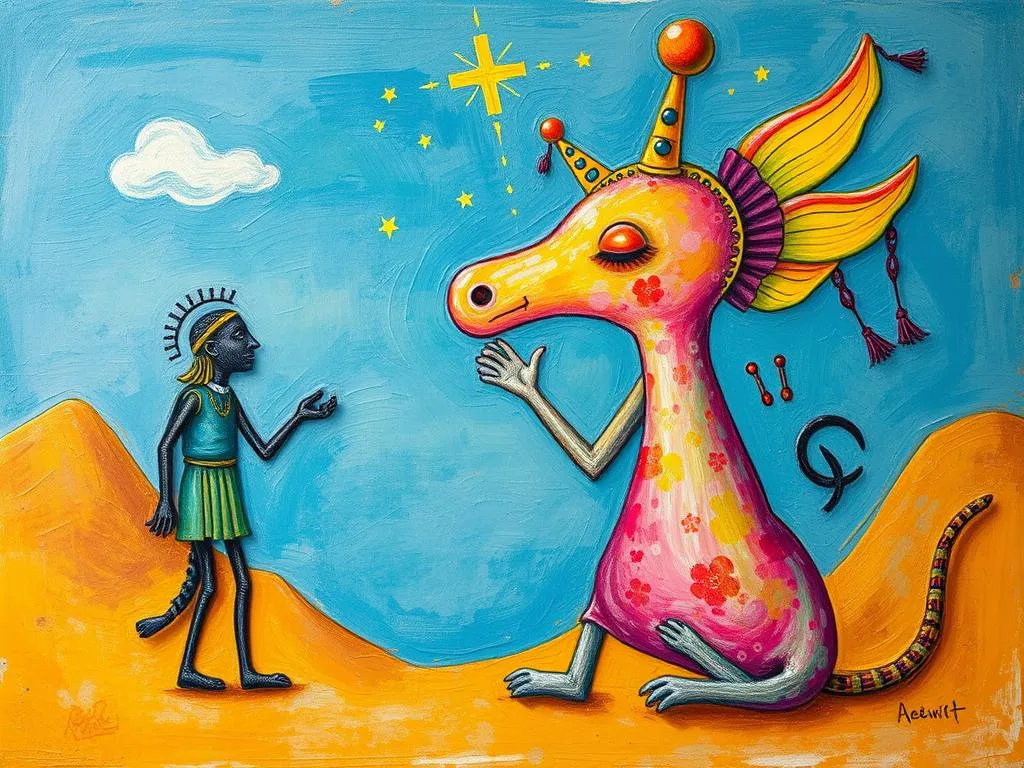
Dreams have long fascinated humanity, acting as a bridge between our conscious existence and the deeper layers of our psyche. They whisper secrets from our unconscious mind, revealing hidden desires, fears, and insights. One of the most intriguing aspects of dreams is their symbolism—the unique language through which our inner selves communicate. Just as ancient Egyptians used hieroglyphs to convey complex ideas, our dreams utilize symbols to express feelings and thoughts that may be difficult to articulate in waking life.
In this exploration of hieroglyphic dream symbolism, we will delve into how symbols operate in our dreams, the experiences that give rise to these symbols, and how they can serve as guides for personal growth. By understanding this dream language, you will unlock a treasure trove of insight and wisdom that can transform your waking life.
The Language of Symbols: Decoding Your Dreams
The world of dreams is rich with symbolic imagery, where every element can carry profound meaning. Engaging with these symbols can help you unveil layers of your subconscious. Just like hieroglyphs, which were both literal and metaphorical, dream symbols can represent tangible objects and abstract concepts.
-
Animals: Animal symbols often embody primal instincts or emotions. For instance, dreaming of a lion might symbolize courage or power, while a snake could represent transformation or hidden fears. The specific characteristics of the animal and your feelings toward it during the dream can provide deeper insights.
-
Water: Water is a potent symbol in dreams, often associated with emotions and the unconscious mind. Calm waters may indicate emotional stability, while turbulent seas can signify inner turmoil. The state of the water can reflect your current emotional landscape.
-
Flying: Flying dreams evoke a sense of freedom and liberation. They can symbolize aspirations, a desire to rise above challenges, or a need for escape. However, if you feel anxious while flying, it may reflect fears of losing control or being overwhelmed.
-
Buildings: Structures in dreams, such as houses or skyscrapers, often symbolize the self or various aspects of your life. Different floors may represent different levels of consciousness, while the condition of the building can reflect your mental state. A crumbling house might suggest unresolved issues or neglected aspects of yourself.
-
Numbers: Numbers can carry specific meanings, often linked to personal experiences or cultural beliefs. For example, the number seven is often seen as a symbol of spirituality and introspection, while the number three can represent creativity and communication.
By identifying and analyzing these symbols, you can create a personal lexicon that resonates with your unique experiences and emotions.
Dreamscapes: Tales from the Subconscious
To further illustrate the power of dream symbolism, let’s explore some scenarios that might resonate with you. Each scenario highlights a different aspect of dreams, offering insight into the messages your subconscious may be conveying.
-
The Lost Traveler: Imagine a dream where you are wandering through an endless desert, searching for an oasis. This dream might symbolize feelings of isolation or a quest for fulfillment. The desert represents a barren emotional landscape, while the oasis symbolizes hope and rejuvenation. Reflect on areas in your life where you feel lost or unfulfilled, and consider what steps you can take to find your own oasis.
-
The Towering Wave: In another dream, you find yourself standing on a beach, watching a massive wave approach. As it crashes down, you feel both fear and exhilaration. This scenario might indicate that you are facing overwhelming emotions or challenges in your waking life. Are you resisting the tide of change, or are you ready to embrace it? By acknowledging and riding the wave, you can emerge stronger and more resilient.
-
The Chasing Shadow: Picture a dream where you are being pursued by a shadowy figure through a labyrinthine city. You feel both fear and a sense of urgency. This dream often reflects your attempts to escape from unresolved issues or feelings of inadequacy. What are you running from? It might be time to confront these shadows, as they may hold valuable lessons about your fears and desires.
-
The Broken Mirror: Envision a dream where you look into a shattered mirror and see distorted reflections of yourself. This dream could symbolize a fractured self-image or feelings of insecurity. What parts of yourself do you struggle to accept? Embracing these fragments can lead to greater self-awareness and healing.
-
The Abandoned House: In this dream, you explore a dilapidated house filled with forgotten memories and dust-covered furniture. This dream may represent unresolved past experiences or aspects of your life that need attention. What stories does this house hold? By revisiting these memories with compassion, you can begin to integrate them into your current narrative.
Each of these scenarios serves as a reminder that our dreams are not mere random occurrences but rather profound reflections of our inner worlds. By paying attention to the symbols and emotions within your dreams, you can glean insights that assist you on your journey of self-discovery.
Unraveling the Threads: Your Path to Personal Growth
Understanding your dreams is not just about interpreting symbols; it’s about using these insights for personal growth. By integrating the lessons from your dreams into your waking life, you can foster a deeper sense of self-awareness and emotional resilience.
-
Keep a Dream Journal: Start documenting your dreams upon waking. Write down as much detail as you can remember, including feelings and symbols. Over time, patterns will emerge that can help you understand recurring themes in your life.
-
Reflect on Emotions: As you analyze your dreams, pay close attention to the emotions they evoke. What feelings arise in response to certain symbols? These emotions can provide valuable clues about your current mental state and areas that require attention.
-
Engage with Symbols: Create a personal symbol dictionary, listing dream symbols and their meanings as they resonate with you. This practice allows you to connect more deeply with your subconscious and encourages ongoing exploration of your inner landscape.
-
Seek Professional Guidance: If you find that certain dreams are particularly troubling or recurring, consider speaking with a psychologist or dream analyst. They can provide insights and techniques for processing emotions related to your dreams.
-
Embrace Change: Finally, be open to the changes that may arise from your dream insights. Sometimes, dreams challenge us to confront uncomfortable truths or push us toward transformation. What steps can you take today to align your waking life with your dreams? Embracing change can lead to profound personal growth and fulfillment.
As you embark on this journey of dream exploration, remember that your dreams are your allies. They guide you through the labyrinth of your subconscious, illuminating paths you might not have considered. By embracing the hieroglyphic symbolism of your dreams, you can unlock insights that lead to a more authentic, fulfilling life.
In the words of Carl Jung, “Who looks outside, dreams; who looks inside, awakes.” As you decode the symbols of your dreams, you are not just interpreting a language; you are engaging in a dialogue with your true self. Embrace this process, and let the wisdom of your dreams propel you toward a deeper understanding of your journey.







